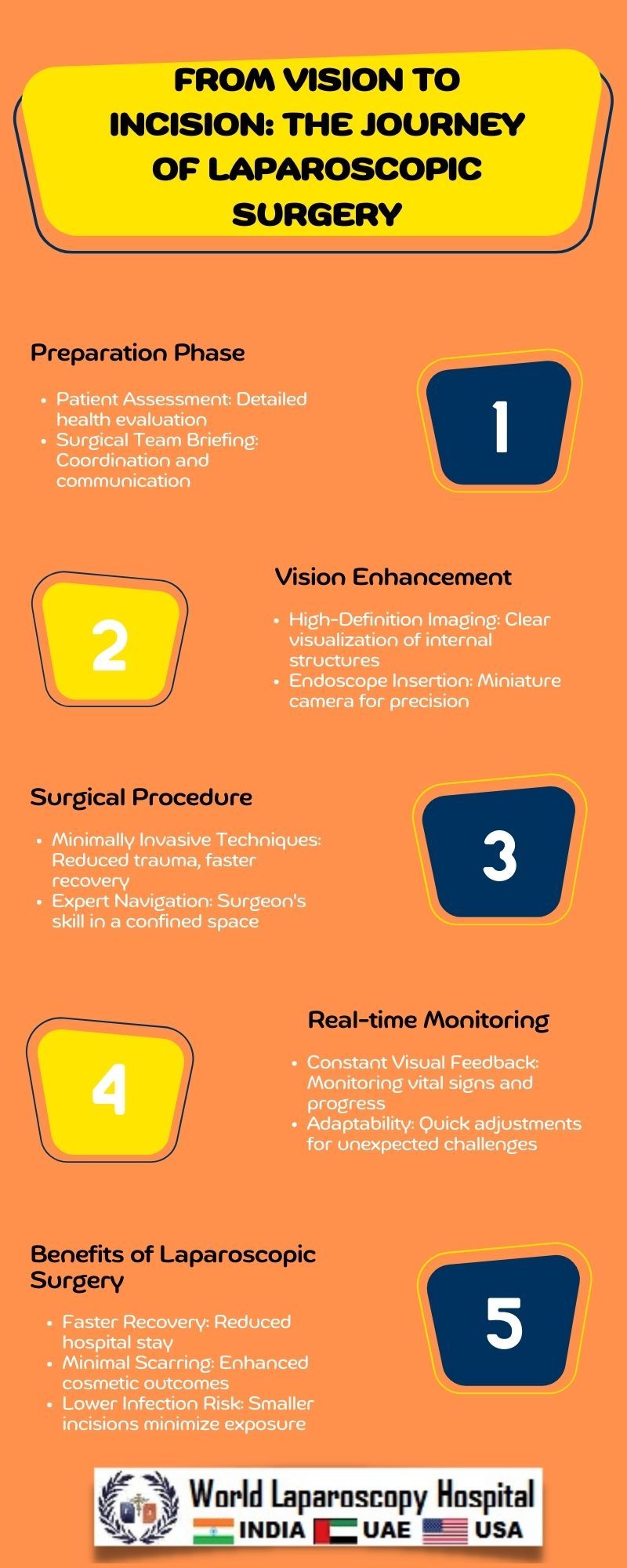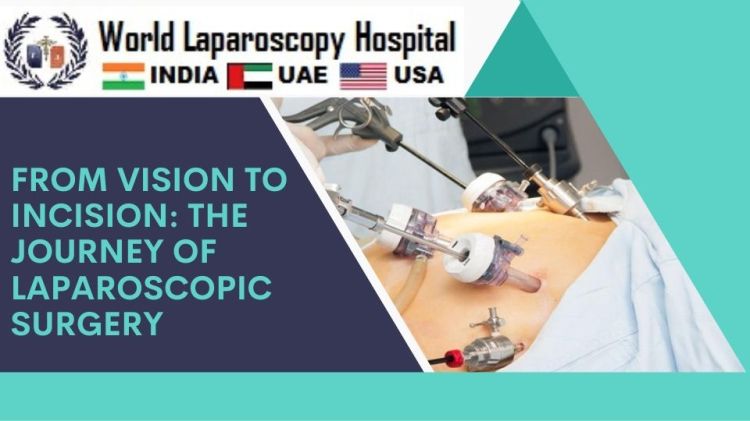From Vision to Incision: The Journey of Laparoscopic Surgery
Introduction:
The realm of surgical procedures has undergone a revolutionary transformation with the advent of laparoscopic surgery. This minimally invasive technique has not only redefined the landscape of modern surgery but has also significantly improved patient outcomes. In this exploration, we embark on a comprehensive journey through the evolution of laparoscopic surgery, tracing its origins, milestones, and the profound impact it has made on the medical field.

The Genesis of Laparoscopic Surgery:
To truly understand the journey of laparoscopic surgery, we must delve into its origins. The first inklings of minimally invasive techniques date back to the early 20th century, with the introduction of rudimentary endoscopes. However, it wasn't until the 1980s that laparoscopic surgery truly began to take shape. Pioneering surgeons, such as Dr. Philippe Mouret, performed the first laparoscopic cholecystectomy, laying the foundation for a revolutionary shift in surgical practices.
Technological Advancements: Shaping a New Frontier
Optics and Visualization:
One of the critical aspects that propelled laparoscopic surgery into mainstream practice was the advancement in optics and visualization. Early laparoscopic systems had limitations in image quality and depth perception. However, with the introduction of high-definition cameras and three-dimensional imaging, surgeons gained unprecedented clarity and precision during procedures. This enhancement not only improved surgical outcomes but also expanded the scope of laparoscopy to intricate surgeries across various specialties.
Instrumentation and Ergonomics:
As the demand for more sophisticated laparoscopic procedures grew, so did the need for specialized instrumentation. Surgeons required tools that replicated the dexterity of traditional open surgery in a confined space. The evolution of laparoscopic instruments, from rigid and cumbersome to articulating and minimally invasive, significantly contributed to the success of laparoscopic procedures. Moreover, advancements in ergonomic design aimed at reducing surgeon fatigue and improving comfort during extended surgeries have become integral to the evolution of laparoscopic surgery.
Procedure Expansion: Beyond Cholecystectomy
Initially limited to cholecystectomy, laparoscopic surgery has expanded its reach into various surgical specialties. From gynecology to urology and colorectal surgery, the versatility of laparoscopy has paved the way for minimally invasive approaches to conditions that were once deemed too complex. Surgeons can now perform intricate procedures, such as hysterectomies, prostatectomies, and even certain types of cardiac surgeries, with reduced postoperative complications and quicker recovery times.
Training and Skill Development:
The adoption of laparoscopic surgery necessitated a paradigm shift in surgical training programs. Surgeons accustomed to the tactile feedback of open procedures had to adapt to a visual and hand-eye coordination-based approach. Simulation technologies, virtual reality platforms, and dedicated training programs emerged to bridge the gap, ensuring that surgeons could master the skills required for laparoscopic procedures. The evolution of training methodologies has been instrumental in fostering a new generation of laparoscopic surgeons.
Patient Benefits and Healthcare Economics:
The advantages of laparoscopic surgery extend beyond the operating room. Patients undergoing laparoscopic procedures experience reduced pain, shorter hospital stays, and quicker recovery times compared to traditional open surgeries. These benefits not only enhance patient satisfaction but also contribute to significant cost savings in the healthcare system. As a result, the economic implications of laparoscopic surgery have garnered attention, influencing healthcare policies and shaping the future of surgical practices.
Challenges and Future Directions:
Despite its undeniable success, laparoscopic surgery faces challenges that warrant consideration. Access to laparoscopic procedures remains disparate globally, with some regions lagging behind in technology adoption. Additionally, the learning curve for surgeons transitioning from open to laparoscopic techniques can be steep. As technology continues to evolve, addressing these challenges becomes pivotal in ensuring equitable access to the benefits of laparoscopic surgery.
Conclusion:
From its humble beginnings to its current status as a cornerstone of modern surgical practice, the journey of laparoscopic surgery is a testament to human ingenuity and perseverance. The evolution of technology, coupled with advancements in training and instrumentation, has propelled laparoscopic surgery into a realm of unparalleled success. As we look towards the future, the continued refinement of techniques, expanding procedural applications, and addressing global disparities will shape the next chapter in the ever-evolving narrative of laparoscopic surgery.


